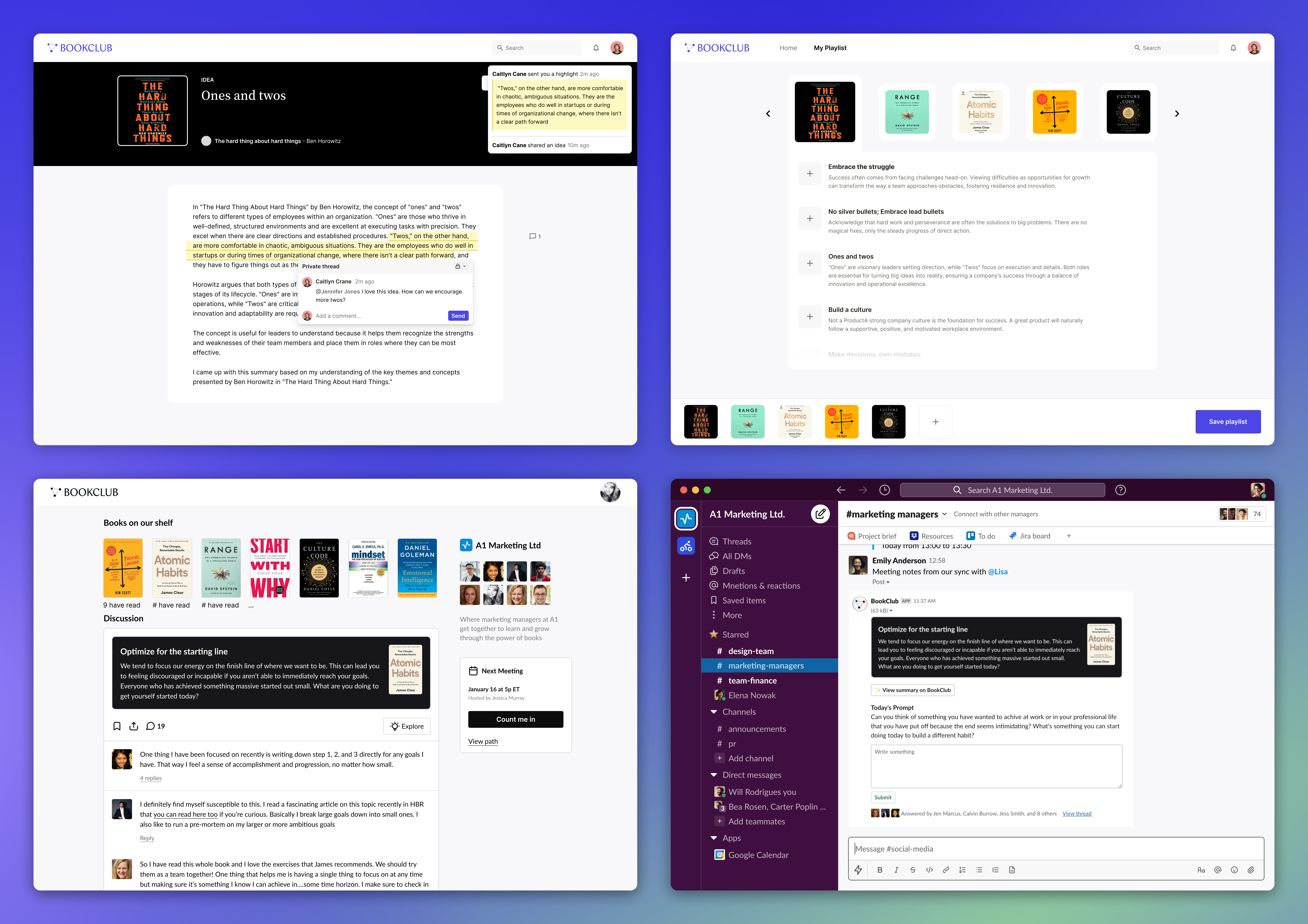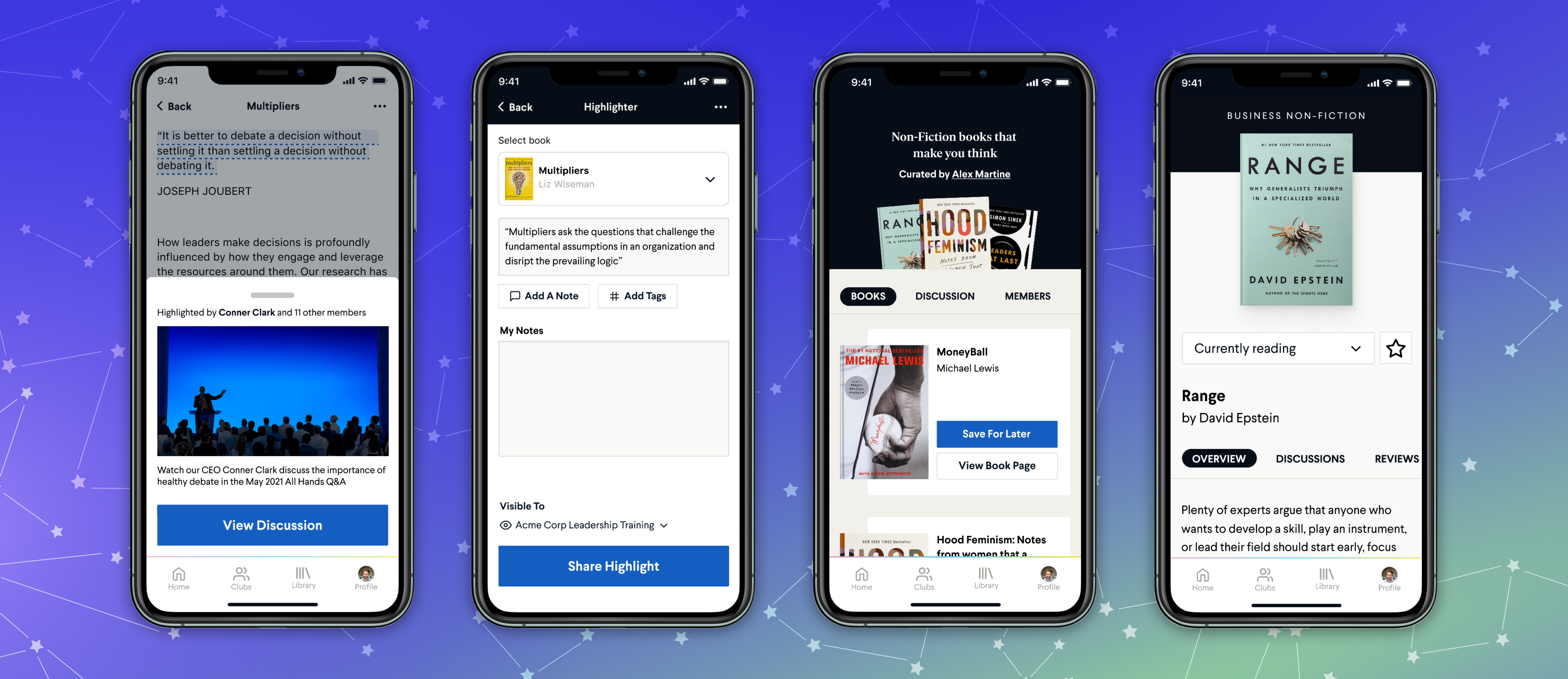
How I used design-driven discovery to guide our pivot into B2B
Despite exciting early signals from our MVP, it was clear we missed the mark for one half of our two-sided platform. Authors and book club leaders were engaged, but we had not stabilized the retention curve for readers. Over six weeks, I led the process to identify alternative paths forward, design a beta product we could put into market, and define a B2B content strategy that led to our first enterprise sales, unlocking the company’s pivot into B2B.
Impact
As a result of my work, the company transitioned from consumer-focused to B2B-focused, increasing retention in its core journeys and decreasing unit costs. I helped identify a lovable product that solved for author/club leader needs and for end users. My content design became the core interaction for the updated product, while the interaction design led to advances in how generative AI might serve both sides of the market.
Role
Product vision, research, product discovery, conceptual design, content design
Team
COO, COS (engineer), content manager, header of sales
BookClub 1.0
What if we built a place for readers to connect with the authors of the books they loved?
Our initial concept for BookClub was a MasterClass-inspired content platform where authors could take readers deep into their mind and their process. Our bet was to host clubs and books that were already trending in order to kickstart growth and engagement loops. Our CEO believed this would help us attract and sign new authors who would, in turn, attract new readers.
I directed the design and product teams in the creation of our initial experience. At first the bet paid off. We signed several A-list authors and book club hosts, including Belletrist (Emma Roberts' bookclub), John Maeda, Eva Chen, Mikki Kendall, and Barbara Corcoran. We raised $20 Million. Our waitlist grew to over 6,000, we launched the first of several content packages, and we were bullish about taking the product to a general audience.

But then…
Retention stalled, engagement plateaued. We were missing something.
I looked for clues in our product analytics data and talked to 30 customers and prospective customers to find patterns. Turns out the answer was staring us in the face.
Even if people joined a book club that met monthly, they rarely read the book on time. People felt guilty if they were behind, so they wouldn’t show up to watch the content at the same time of those who had read it. This lack of engagement meant those who had read it had fewer people to engage with. We were in a vicious cycle.
I needed to find a way to keep people engaged more frequently, even if they hadn’t finished the book.
“This service is more for the author than it is for the reader. Make my reading experience better, don’t just give me a video.”
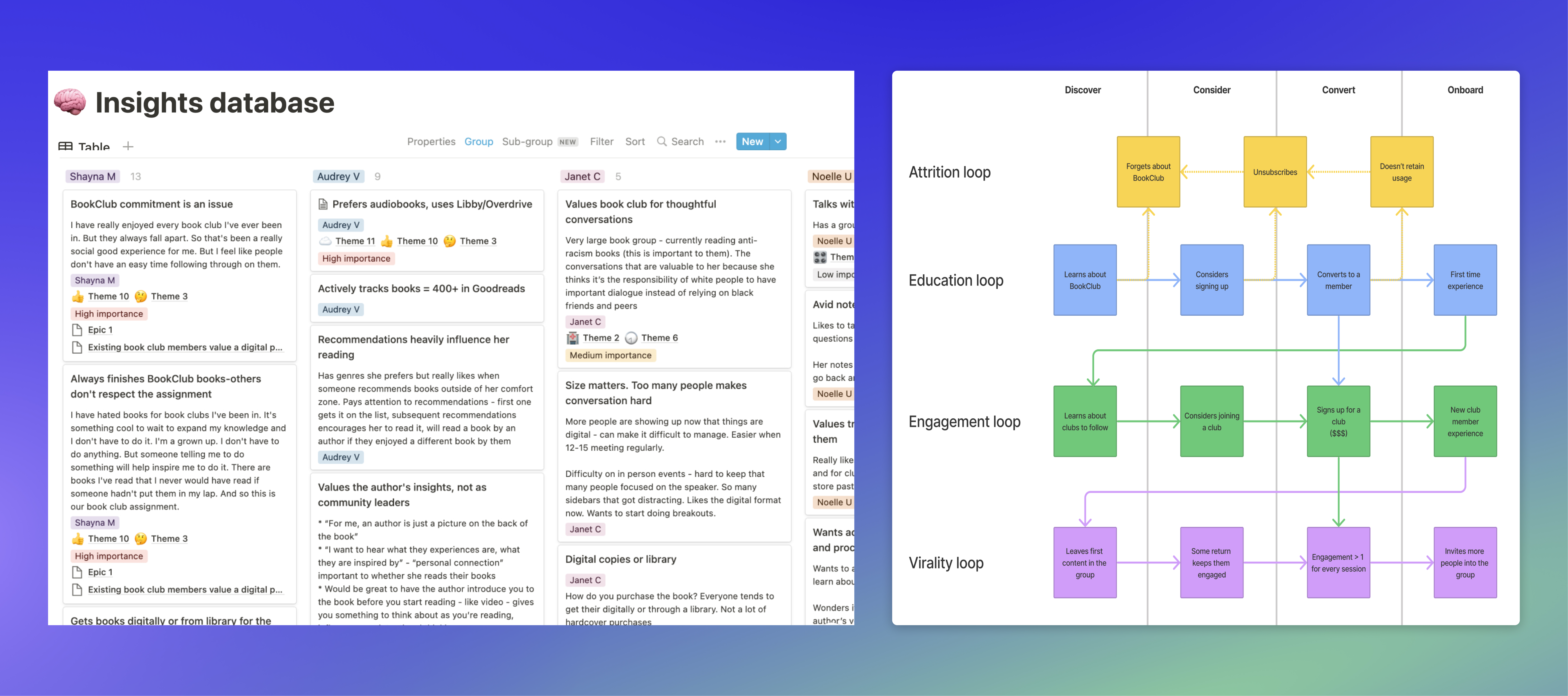
Running rapid discovery on product market fit
A small strike team gathered, and I facilitated a brainstorming session to generate a new vision for the application. Our hypothesis was to give people things to do while they read, to wrap the existing content in the context of the book, and to introduce some form of social commenting or sharing akin to Kindle's social highlighting.
Armed with these ideas, I rapidly generated a conceptual prototype to match our hypothetical experience and started to set up discovery calls. Working with the Chief of Staff, we sourced 25 people who identified as avid readers, who self-identified as having a variety of different existing behaviors such as highlighting books, searching for details about things raised in the book, or participating in conversations.
As we learned from each conversation, I began to incrementally whittle down the large prototype into smaller pieces that could be individually assessed.
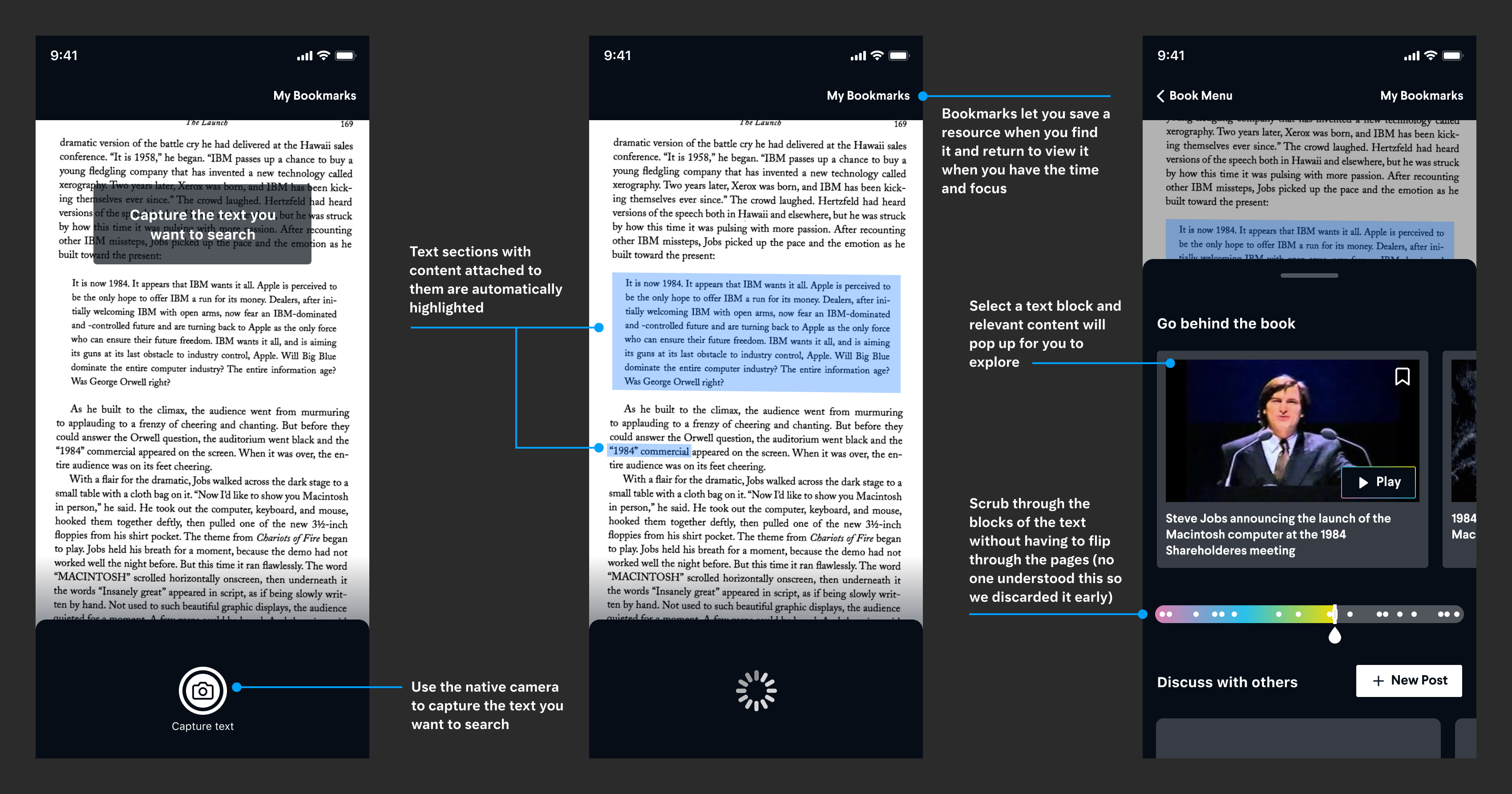
A few things were clear early:
- Searching for things while reading was common. 80% of people identified this as an existing behavior that they didn't have a good solution for.
- Different types of content were useful for different types of books and topics.
- People came across things in books that sparked their curiosity, but they didn't necessarily want to get distracted from reading so saving for later was important.
When we described and then showed our solution, all participants understood it, and nearly all were excited about it. A third said they would be very disappointed if we didn't build it–a moderate signal of value.
But, when we focused on people who read non-fiction books to gain professional skills or somehow related to work, that number more than doubled. In fact, the work use case was so strong that we immediately had people in management positions asking us to build this.
There was clearly a use case related to professional learning. We had stumbled upon an opportunity: how might BookClub bring value to your professional learning by helping you connect with your team and with concepts that grow your skills?
“I‘m learning from books all the time FOR work, but I don’t know how to bring that information INTO work without it feeling like homework. I would love to be able to use a book to spark a conversation and go deeper.”
Finding traction and setting up scale
I rapidly adjusted our prototype to focus more on a B2B use case. Based on the initial results of our conceptual testing, I identified three primary experiences to validate
- Curiosity: Let me go deeper into the book on demand by discovering related content or annotations by the author
- Social: When I find things that interest me or pique my curiosity, let me share with others
- Learning: As a content administrator, let me push information or key takeaways to readers as the progress through the book.
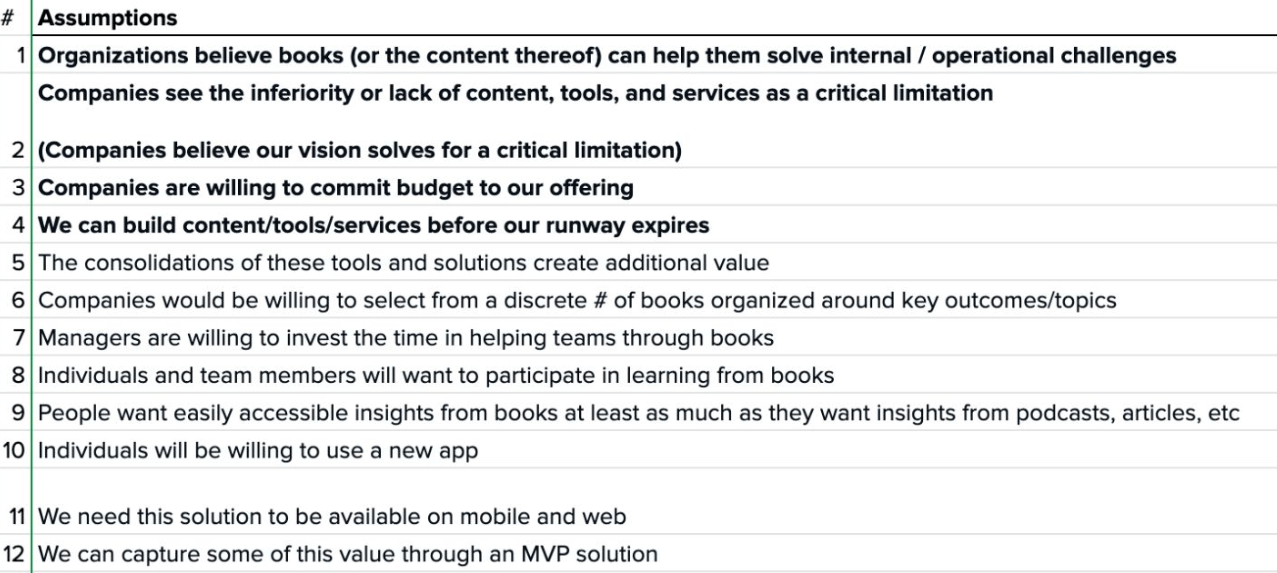
We set up more conversations with HR Leaders and with employees to understand whether these would be viable use cases at work, and which to lead with, honing the product design as we progressed.
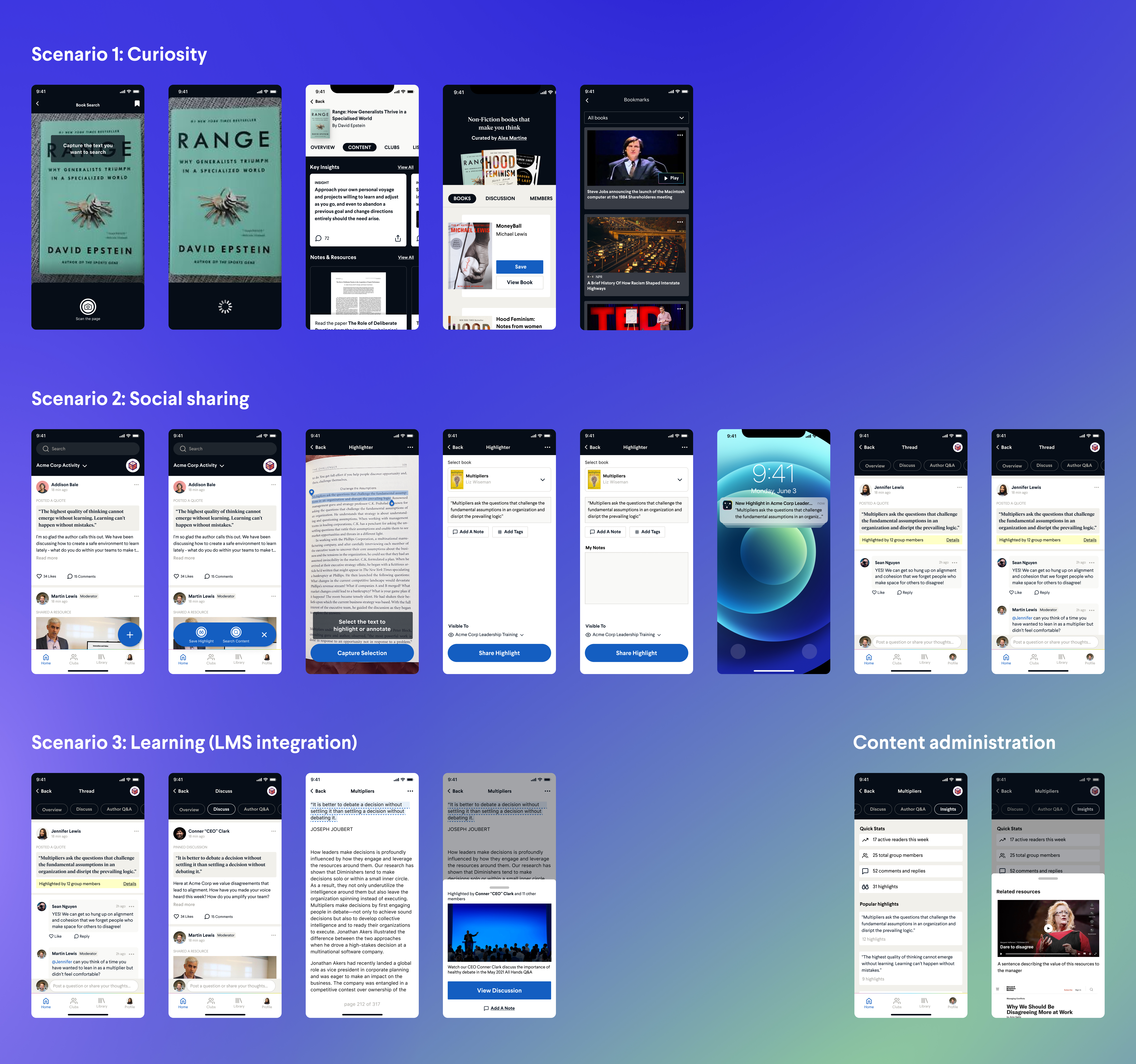
Introducing: “Sparks”
As the sales leader and COO started sourcing beta customers, I worked with the content manager on my team to develop our initial content. I oriented us to the concept of a "spark" - some atomic idea that was a useful prompt for conversation even if you hadn't read the book.
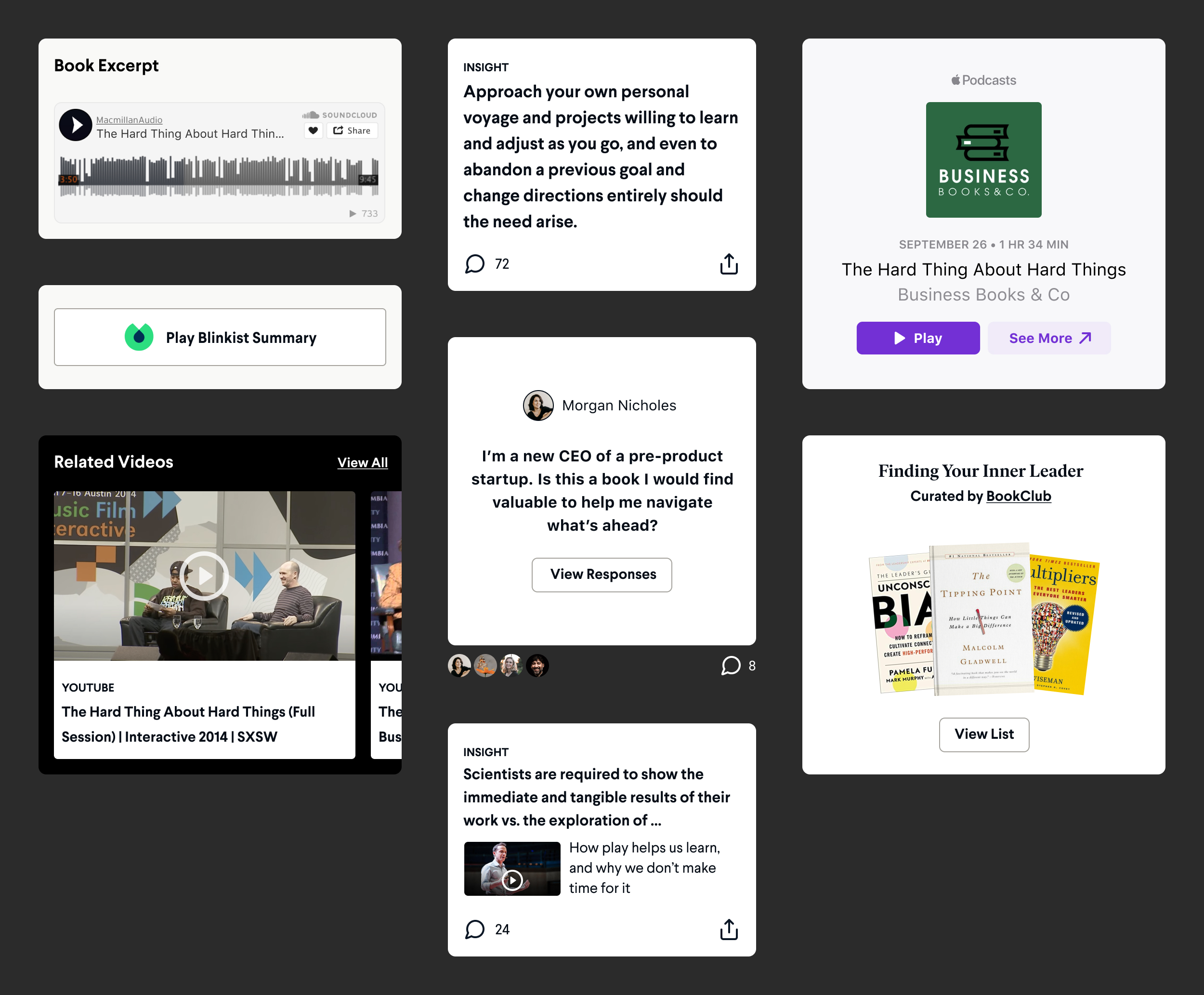
The experience was simple: A team or organizational leader would select a book for their group to use to further productive discussion around their internal goals. On a regular cadence “sparks” would be texted or Slacked to each team member. The individual could participate in active conversation throughout the month, or wait until a structured book discussion.
Using my prototype, we were able to sign our first 3 B2B customers in the initial month.

Results
As a result of the product discovery effort I led, our company transitioned successfully from consumer-focused to B2B. We signed customers who brought their teams with them, removed the burden of book clubs feeling like homework, and made the book's content more accessible.
Delivering personalization with Generative AI
The immediate success of this concept led to a shift in focus for the company. Over the course of a year, the product shifted further away from the Masterclass-esque content model, and towards the B2B SaaS platform.
This has also opened up opportunities for new discovery, related to AI-driven content design and opening up additional opportunities, such as the social and discovery concepts we left on the table.
There is more to learn, and more to build. In the meantime, my use of design-driven discovery allowed the company to uncover new income streams, evolve despite a turbulent world and market, and unlock a path to delivering real customer value.
